Author & Geometric Artist
photo by Mirek Majewski
A gifted artist with a background in mathematics, Jean-Marc Castera is an established expert in Islamic Geometric Art. After his degree in Mathematics Jean-Marc launched an experimental course at Paris-8 University, exploring the connections in mathematics and arts, and started working on geometric arabesques. By that time there was little material on the topic. He worked for years and published the results of that work in two books: Arabesques. Decorative Art in Morocco (1999, first publication in French in 1996), and Géométrie douce: art géométrique arabo–andalou, along with many papers on the subject. Since 2006 he has been working on several architectural projects, a perfect opportunity to experiment with ideas and further evolution of the art. His works can be seen in places such as the new Central Market or Masdar Institute of Science and Technology, in Abu Dhabi.
Q. Would you explain to us a little about your background? We are curious to know how did you become interested in patterns and geometric art?
A. I was born in the mountain, at the boundary between France and Spain. My father died at the age of 27, then my mother, my two sisters and me, we moved a lot; now I am living in Paris. My heart belongs to the nomad people.
Although I have always loved drawing, I choose to study mathematics. When I got the chance to teach at the university in Paris, I launched a course on “Mathematics and Art”, at a time when the two worlds were supposed to be absolutely separated. I met the art of M.C. Escher. I understood that the trip he did to Granada (Spain) had been a cornerstone for him. So I decided to follow in his footsteps, and I went to the Alhambra Palace in Granada. That trip has been a cornerstone for me too. Unlike Escher, I really wanted to understand deeply that geometric art. I looked in books, but nothing was useful. That is why I started searching on my own. That took time… In the end, I published two books. The second one, “Arabesques”, is considered the reference book on western traditional geometric style. Even by the Moroccan masters of the art. I care much more about the judgment from those people than from any scholar.
I left teaching, then went to computer images and animation, holography as well, then started living as an artist, doing what I know and love best.
To answer honestly your question “how I become interested in patterns”, I have to tell you a story:
I perfectly remember. I was a little child; I was with my mother in a street market. Sun was shining. Suddenly I saw a golden disc, hanging up in a shop, reflecting the sun. It was certainly a metal tray from Morocco, with a complex geometric pattern engraved on it. This vision of gold, sun and geometry fascinated me. I got a feeling of attraction… and frustration: that thing was the door to a magic golden space, but I did not have the key.
In everything which attracts my interest, I go to its relations with the other things, more than to that thing itself.
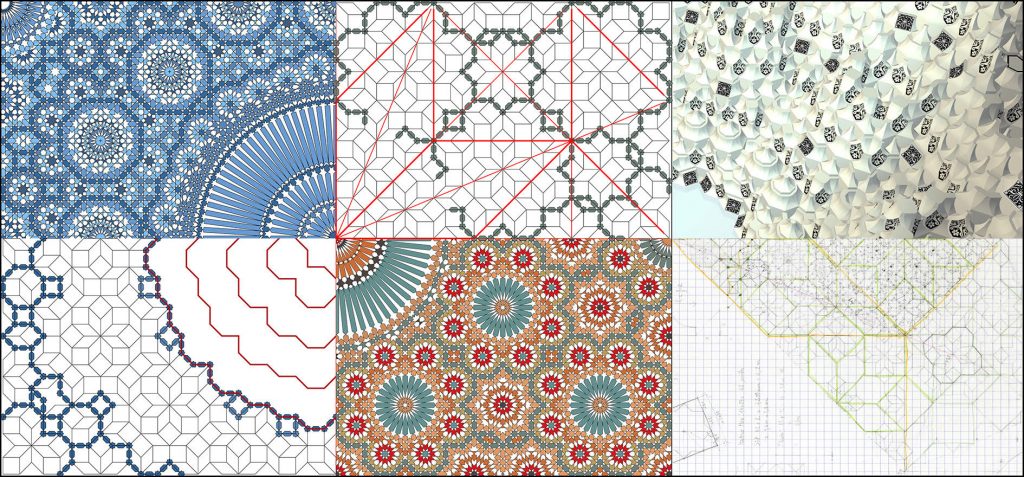
A world of relationship: 96, 64 stars and a muqarnas dome based on the same structure
Q. How do you define “pattern”? In other words, how do you categorize a design as a “pattern”?
A. The English sense of “Pattern” is very large. Here we are talking of patterns in an artistic and/or mathematical point of view.
Let us say that a pattern is a solution to the question of how to fill the space (mainly 2D space) with a repetitive unit. The mathematical definition is more precise: The problem is to fill the infinite plane with a finite set of tiles, without any hole and any overlap. Such a pattern is made of two things: a finite set of tiles, and a structure (instructions for how to use the tiles).
Until the discovery of non-periodic patterns and quasicrystals, such patterns were supposed to be periodic (made of a unit paving the plane with repetition by translation, like a crystal or a wallpaper).
Q. What makes patterns important? What makes patterns interesting?
A. In other words, what makes life important and interesting? Difficult to say, easy to live. Patterns are everywhere, patterns are on your skin.
Q. Do patterns contribute to science and philosophy? What is the relation between patterns and science?
A. Don’t you care about the relations between patterns and philosophy?
That is a question for the genius –and unconventional- French mathematician Alexandre GROTHENDIECK, who died in 2014. The notion of “motif” is relevant in his theory, but very few persons, only high-level mathematician- can understand what it means.
In another hand, you perfectly know that mathematicians have developed a theory of patterns, from the group theory. This is useful for crystallographers and for artists as well.
The relation works on the two sides: we can understand the patterns with the mathematics theory, and mathematicians can learn from patterns: This happened recently with the discovery of quasicrystals, which has initiated a large number of scientific works, and imposed a new definition of what is a crystal, and question the concept of symmetry.
Q. How do you see the transformation of traditional patterns to contemporary ones?
A. Thanks for using the term “contemporary” and not “modern”, I consider modernity as something… “Out of time”.
I am working on the evolution of traditional patterns. What I often see, especially in contemporary architecture, is effectively a transformation, in a very poor sense.
“Tradition and modernity” is a fashionable concept. Nowadays, when architects need to answer to that request from a client, will they go to the masters of the art? No, they go searching for patterns on the Internet. However, their pattern has to be original, “modern”, though they do not have the knowledge. Therefore, they take a traditional pattern and torture it until it becomes unrecognizable, and they will pretend it is a new, a “modern” pattern. Fortunately for them, the client as well do not have the knowledge.
However, even if you do not know anything about patterns, you can feel when it is bad.
The risk with that kind of behaviour is to make people tired with “traditional patterns”.
Fortunately, there are some exceptions, some good pattern designers.
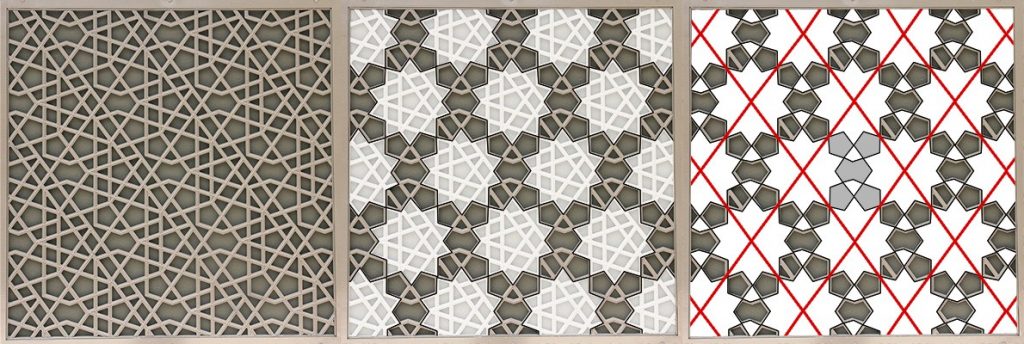
This “new pattern” in Abu Dhabi is nothing than the simplest “Kond” pattern with added lines without respecting the elementary rules. Just a disfigured classical pattern.
Q. Do the traditional patterns still have value in our contemporary art?
A. I can understand your valuable question because formulated in a traditional language.
Q. In which way patterns will be developed in the future? What do you think about the future of patterns? Are there capacities to develop old patterns?
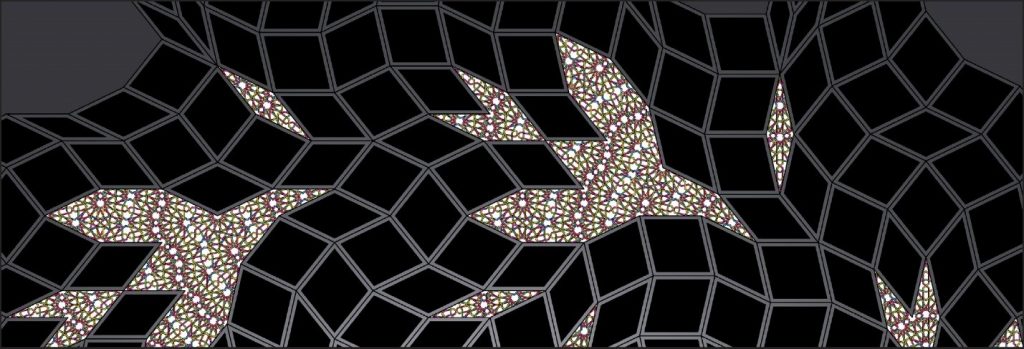
Part of an original 2 layers pattern. From a 7D quasicrystal structure.
A. In his famous –indispensable- book, Mr A. Paccard gave the word to some traditional Moroccan masters of the art. Listen to what Mr Hussein Lamane answered to a similar question. He said:”I’m searching for the unknown flower, the flower which would come from the future”.
I believe that the traditional art of patterns –as a living process- needs, and can evolve again, in respect to its spirit, taking advantage of new mathematical concepts. That is what I’m trying to demonstrate with my work.
Q. How digital media affect pattern design?
A. With the worse and the best.
Q. We have noticed that you had some collaboration with architects. Can you provide us more details about these projects?
A. Foster + Partners was in charge of the New Central Market project in Abu Dhabi (UAE). The client wanted “a touch of tradition” in the décor of the facades. In a “modern interpretation”, of course. The staff worked hard from my book “Arabesques”, but that needs time, and the client was not satisfied with their proposal. So, at the very last moment, they eventually contacted me. They wanted me as an adviser, but I decided to do the design. That was the starting point of a passionate collaboration. My favourite realized the project is in Masdar City, Abu Dhabi.

Patterns for Masdar Institute of Technology, Abu Dhabi
In working with architects, I understood that they have lost the traditional culture of décor. That notion has been rejected in the modern, minimalist style, and the knowledge is not transmitted in schools nowadays. So when they need decoration, they think of it at the end and apply a pattern like a wallpaper.
They do not know that the decor, especially geometric style; have to be elaborated with the structure. That is why I could not avoid some big mistakes in the implementation of my panels in the façade of Abu Dhabi Central Market. Fortunately, the architects learnt from these errors, and the following projects went much better.
Working with Foster+Partners has been a perfect opportunity for experimenting with my ideas for an evolution of the tradition. I was working with a feeling of absolute freedom, mutual confidence. I learnt a lot from those smart people, the group dynamics was very positive. Each project was an experimentation of new ideas, and more new ideas were emerging…
Unfortunately, after the financial crisis, many huge projects have been abandoned, or are still on hold. The activity is slowing…
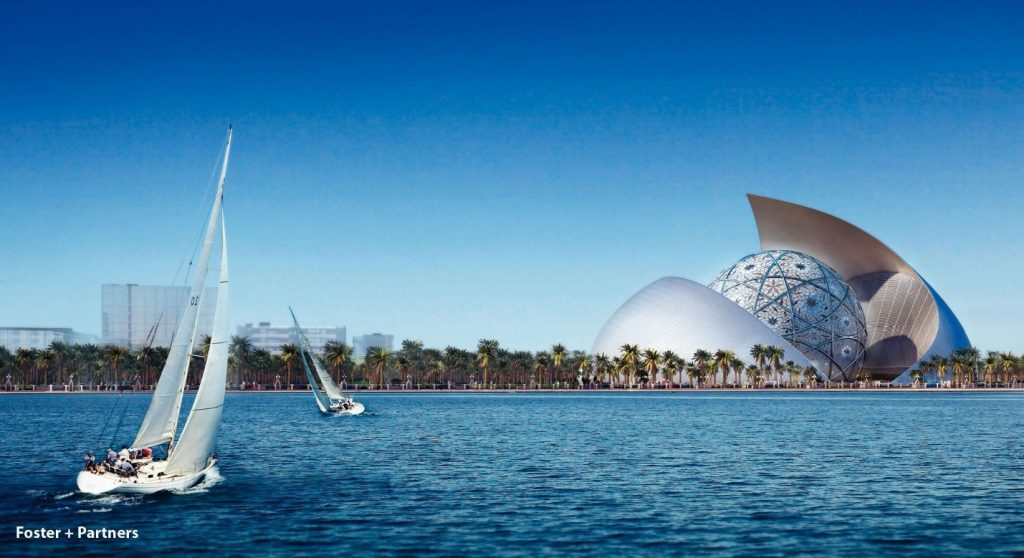
The pattern of the sphere, UAE Council (competition project)
Working on high size project is motivating for a designer’s ego. Because it is attractive to contribute to “big things”, it is a children’s dream. Well, when it’s done… it’s done, now I’m free from that. Now, I would like to realize a more serious dream: to do something good. Big scale or small scale, I don’t care. It has to be good for the people. Not for billionaires or princes, but for the real people. In respect to life.
Q.There are efforts in contemporary architecture to have new interpretations of geometrical patterns, specifically in the buildings’ envelops. How do you evaluate their approach?
A. “New interpretation”, “modern interpretation”… Words, words, words… The truth is that nothing interesting can be done without a deep knowledge of the tradition, which needs a lot of work.
Tradition is made of the obstinate work of generations and generations of anonymous artists and craftsmen, it has reached a high level of sophistication. That deserves respect.
So, if one does not know enough, better to do something absolutely free from the tradition than to try a “new interpretation”. That way can also be closer to the “spirit of the tradition” than doing pastiches or false evolution. However, the client is ignorant, he could be satisfied with a pastiche embellished with words like “tradition and modernity”.
Q. Can we say that in the contemporary state of the practice we need specialized pattern designers?
A. Specialized or not, we need good designers. In another hand… who “we” are? It is clear that many companies need nothing but cheap patterns and cheap designers. We need educated people. That is –also- the responsibility of architects.
Q. As a teacher, do you believe that students should start practice with hand or digital media? Do you think coding is necessary for an advanced pattern design? (Maybe a description of your personal method in work and teaching would be elaborating.)
A. First, dreaming. Dreaming hard. Then, the idea gets down to the paper, through the hand. Then we can use any tool to finalize the idea. Including computer software of course! Coding can be useful, but not necessary. Even without coding, it can be necessary to define a generative process, a kind of algorithm. Working in connection with a computer expert would be helpful. For my part… sometimes I can feel tired of doing always everything on my own. That is the reason why I enjoy when I can work in good company.

Working by hand. With an algorithm draft (into the red rectangle)
I do not have one method, but several. I do not believe in one universal method. But, about my teaching method: First, learning to see. In Morocco and in Iran as well, you need nothing but to look around. Then, the design from the triangular grid. Then I teach a method of freehand design for the octagonal family of patterns, which uses some approximations on a square grid. Then students are encouraged to find a personal basic structure and to solve the pattern. In the end, they go to the computer, using any vector graphic program, to design the pattern in its exact proportions and finish its conception. That is the first stage of learning. I also use some of my games, because it’s so good to manipulate the tiles in real.
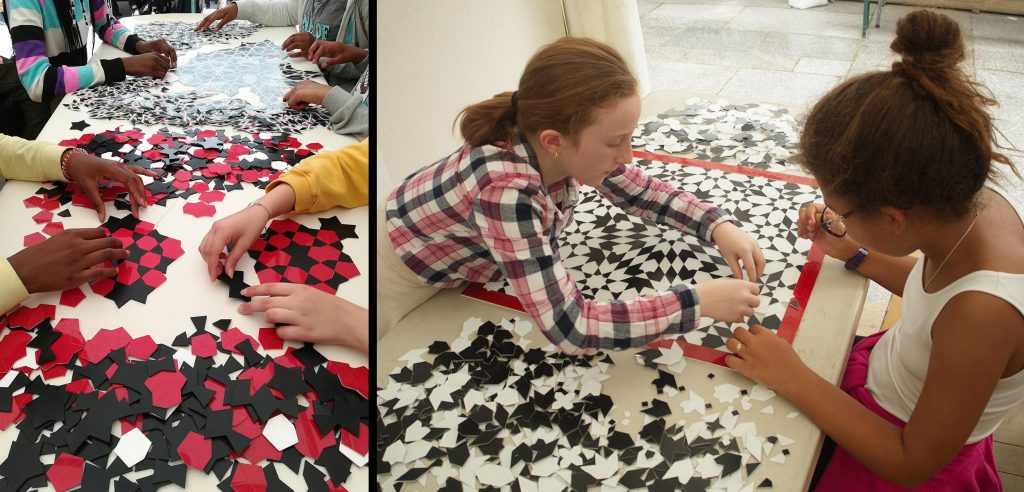
Working with the tiles: a children’s game
Q.Thank you so much for taking time to answer our question.

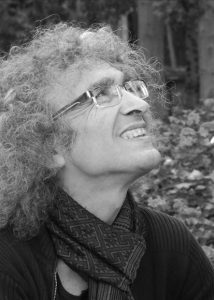
1 comment. Leave new
What a wonderful artist !